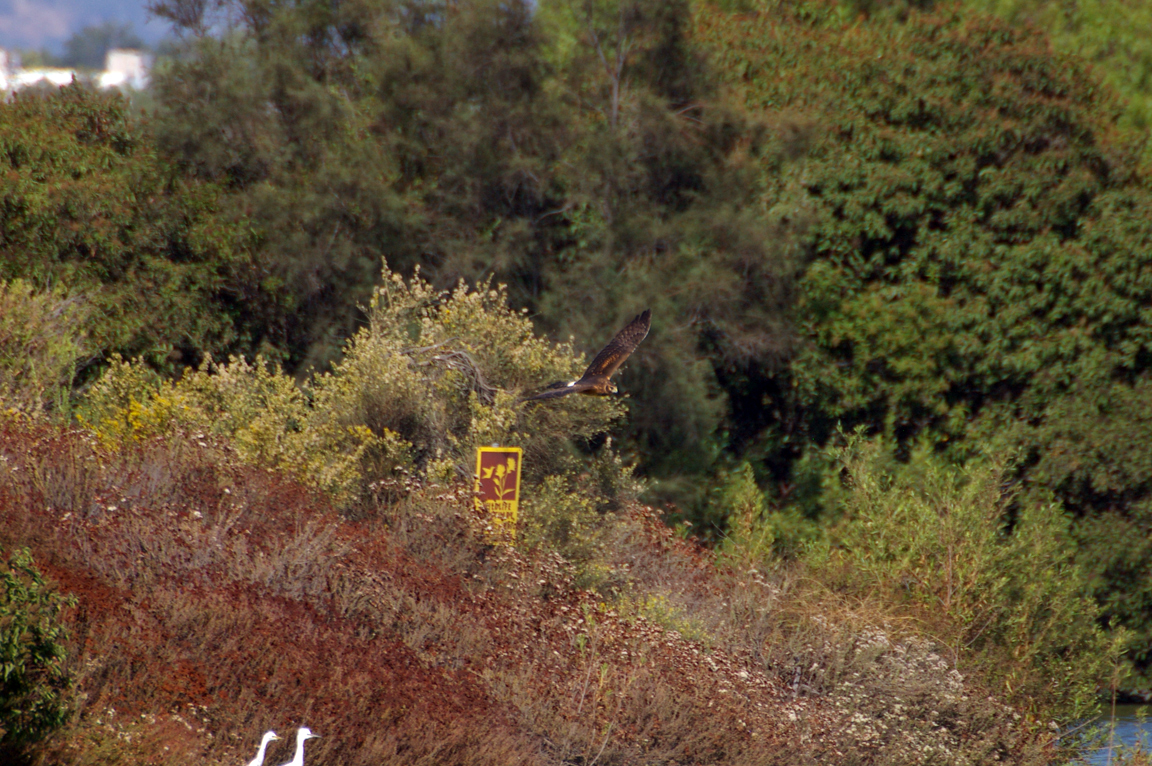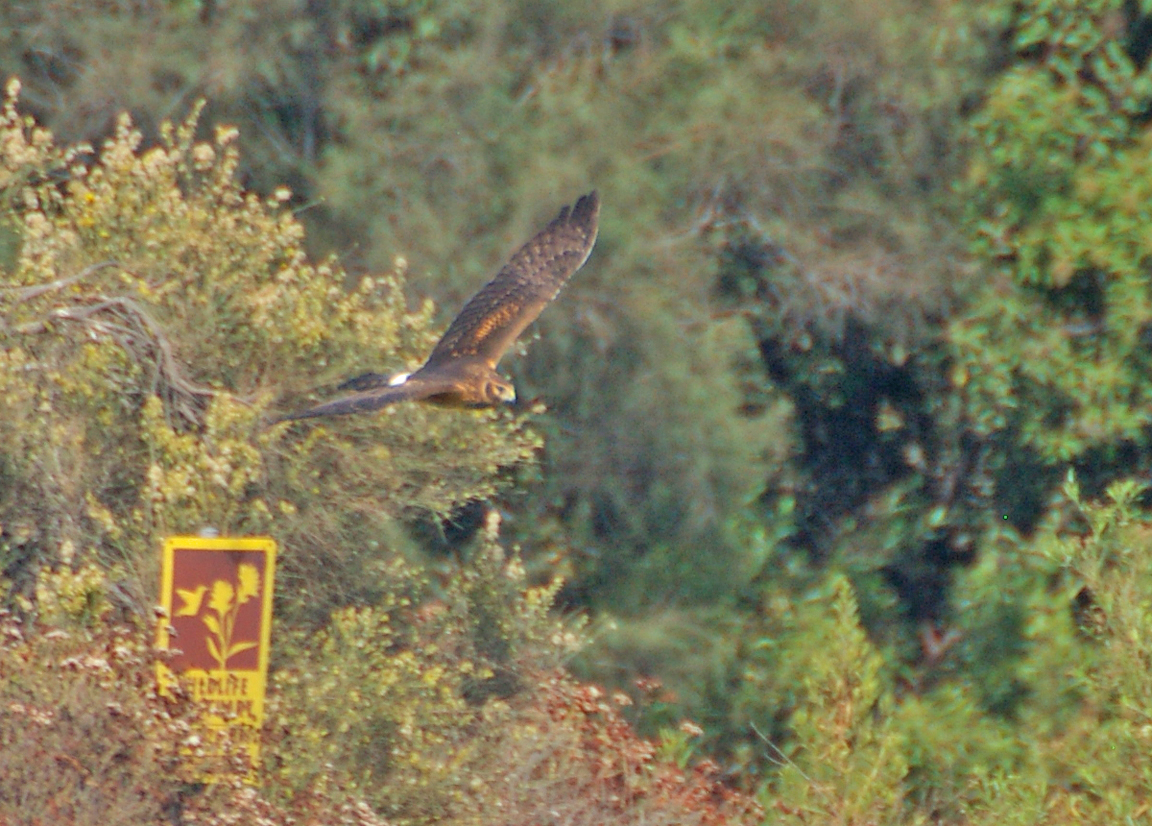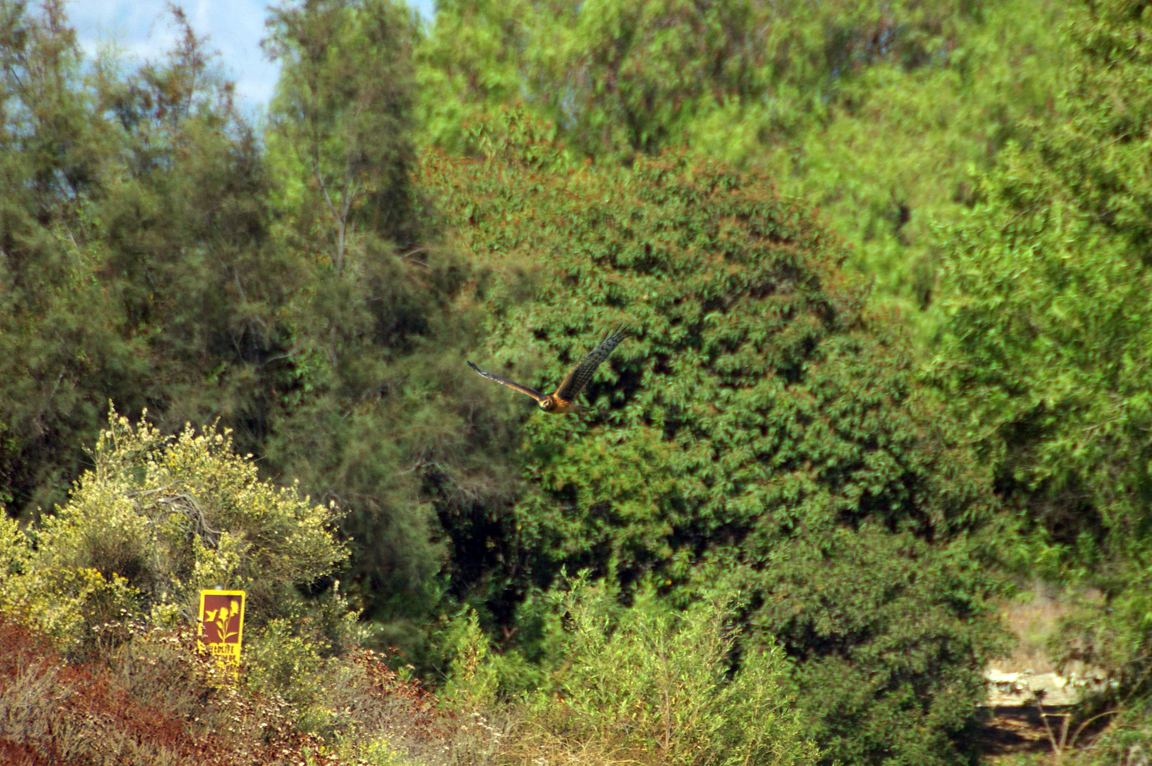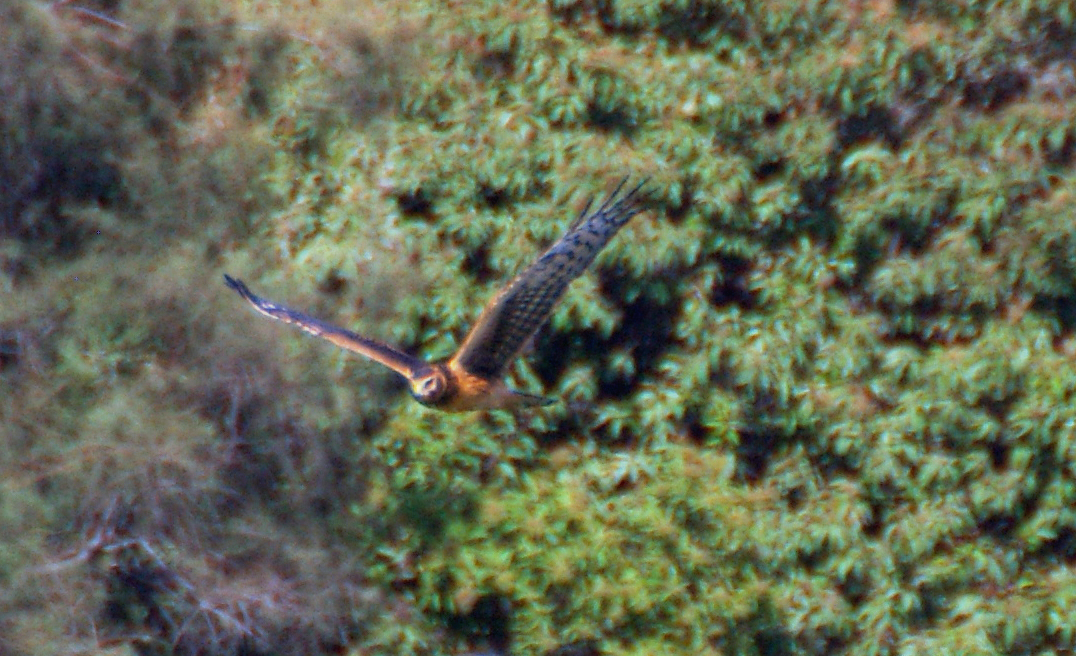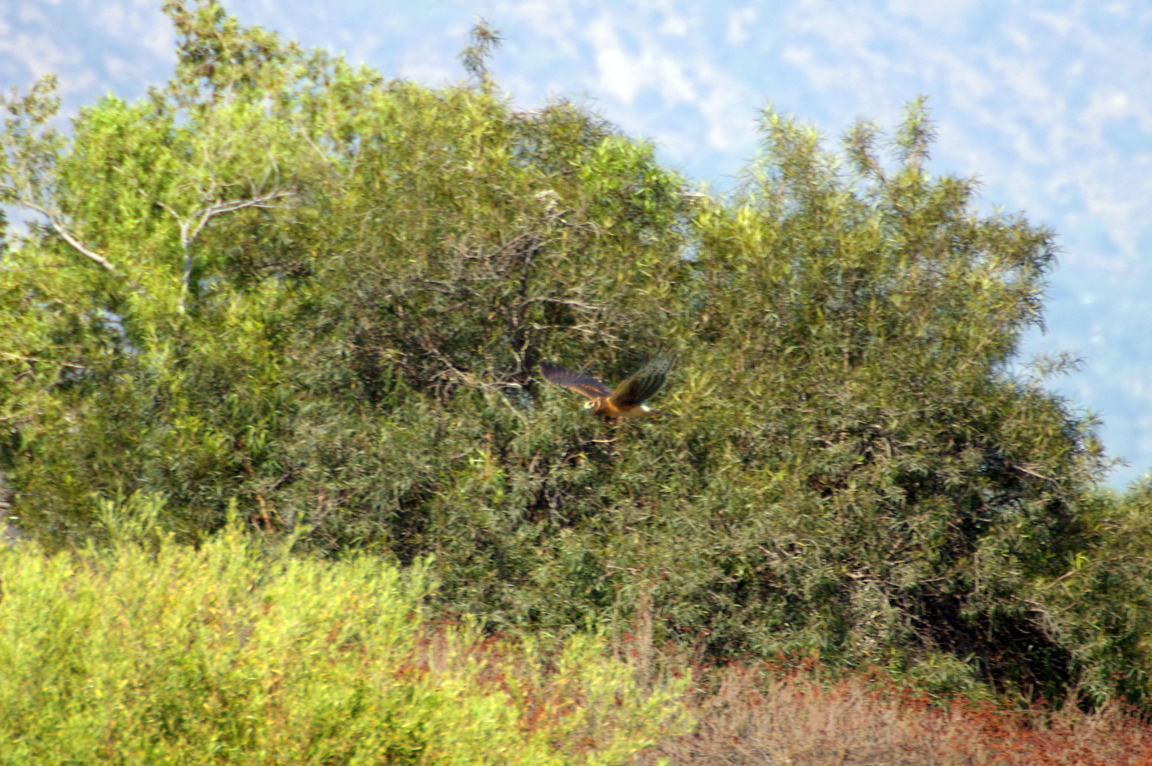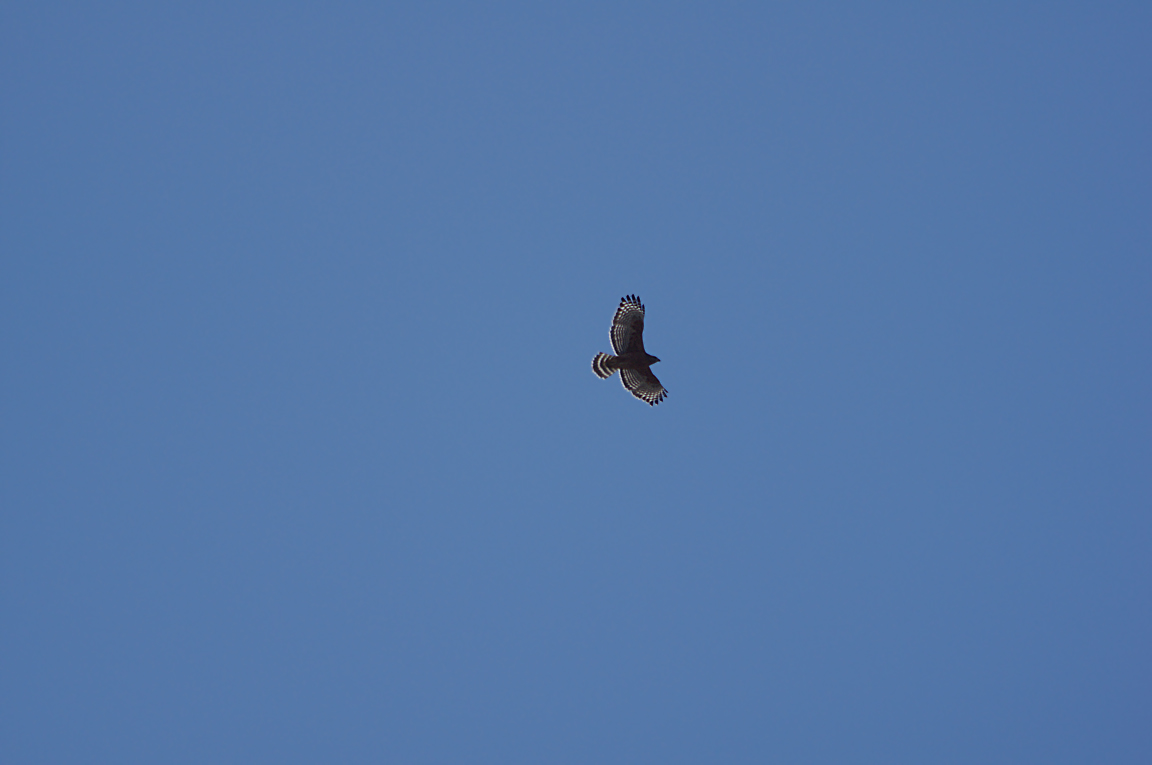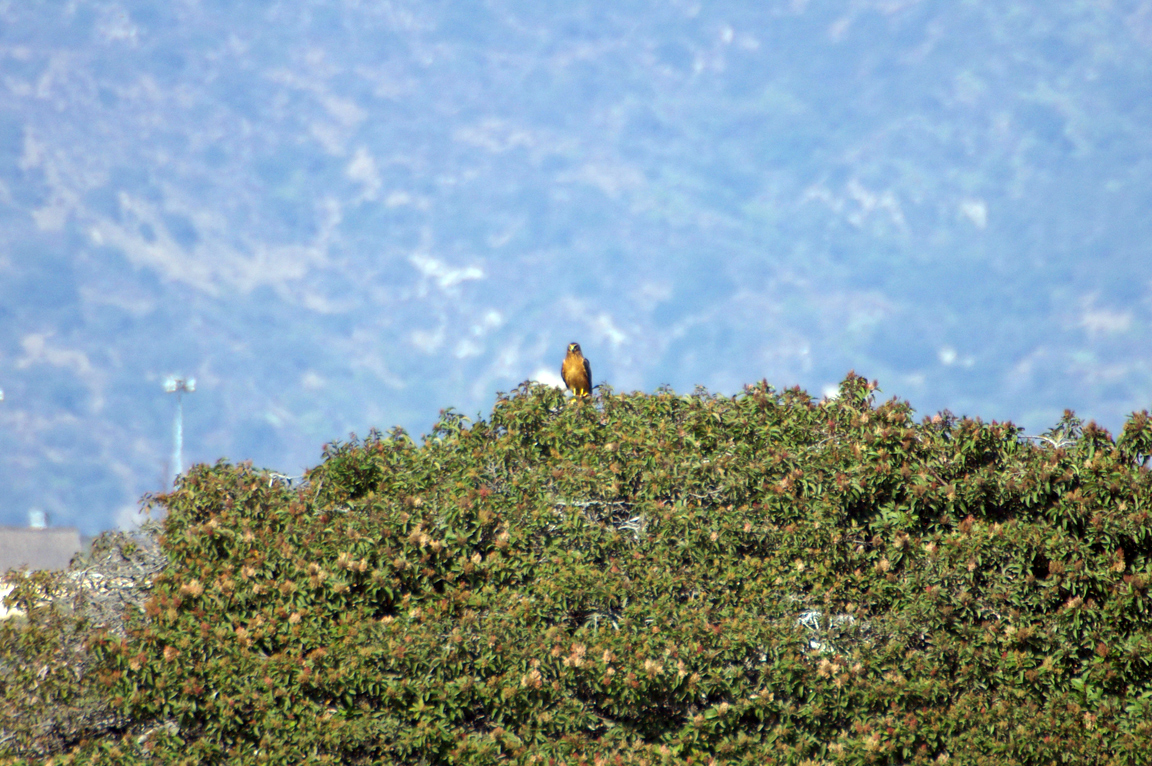|
|
|
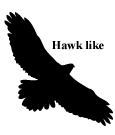 |
Northern Harrier
|
| Circus cyaneus | |
A long-winged, long-tailed hawk of open grassland and marshes, the Northern Harrier forages by flying slowly low above the ground looking for small rodents. It is one of the few raptors in which the sexes look quite different: the male is white below with a light gray back and hood, the female is mottled in browns.
Interesting Information
-
Most male Northern Harriers are mated to one or two females at the same time. Some males pair with up to five mates in a season. Females incubate the eggs and brood the offspring, while the male provides the bulk of the food for his mates and their nestlings.
-
Unlike other hawks, the Northern Harrier relies on its hearing as well as its vision to capture prey. The feathers of the face are stiff to help transmit sound, and it shows a pronounced "facial disk," much like that of an owl.
-
The Northern Harrier feeds primarily on mice, other small mammals, and small birds. It will, however, take larger prey, such as rabbits and ducks. It has been known to subdue large prey by drowning it.
-
A group of harriers has many collective nouns, including a "swarm" and a "harassment" of harriers.
Description
Adult Description
-
Medium-sized hawk.
-
Long tail.
-
Long, slender, rounded wings.
-
White rump.
-
Flies low, with wings held up in slight "V."
-
Length Range: 41-61 cm (16-24 in)
-
Weight: 357 g (12.6 oz)
-
Size: Large (16 - 32 in)
-
Color Primary: Gray
-
Underparts: White
-
Upperparts: Dark Gray
-
Back Pattern: Solid
-
Belly Pattern: Solid
-
Breast Pattern: Spotted or speckled
Sex Differences
Male Description
Head, back, and upper chest light gray. Chest and belly white, usually with some rusty markings extending onto flanks. Wingtips black. Line of black on rear of wings. Underwings white. Tail darkish gray above and whitish below, with some barring. Rump white.
Female Description
Back dark brown, with many feathers edged with tawny. Face streaked brown and whitish. Face outlined by white facial disk. Chest and belly streaked dirty white and tan. Rump white. Upper side of wings brown, lower side barred white and dark brown. Tail brown with dark bars.
Immature
Juvenile similar to adult female, but with rusty wash across mostly unstreaked underparts.
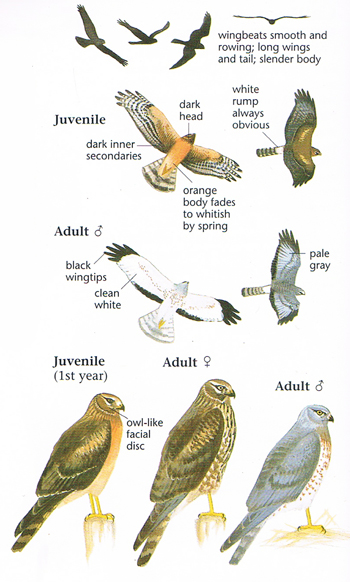
Photo taken from: The Sibley Field Guide by David Allen Sibley
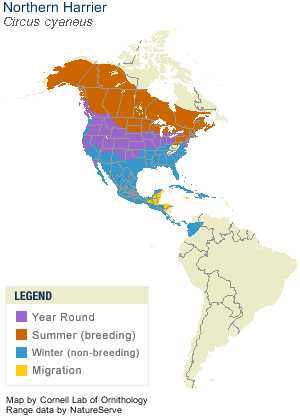
© 2003 Cornell Lab of Ornithology
|
Habitat |
|
Open wetlands, meadows, pastures, prairies, grasslands, croplands, and riparian woodlands. |
|
Behavior |
|
Hunts on wing, flying low over open habitats. |
|
Food |
|
Small mammals, birds, reptiles, and frogs. |
Taxonomy
| Kingdom: | Animalia |
| Phylum: | Chordata |
| Subphylum: | Vertebrata |
| Class: | Aves |
| Order: | Accipitriformes |
| Family: | Accipitridae |
| Subfamily: | Accipitrinae |
| Genus: | Circus |
| Species: | Circus cyaneus |
| Subspecies: | Circus cyaneus cyaneus |
| Circus cyaneus hudsonius |
Similar Species |
|
Rough-legged Hawk has white base of the tail and hunts over open areas, but has broader wings, a shorter tail, black on the belly, and shows white at the base of the underside of the tail. |
|
Bird Sound |
|
Courtship call a series of "kek" or "ke" notes. Also a piercing, descending scream. |
|
Eggs look like this |
|
Photo taken from: ARCTOS Collaborative Collection Management Solution |
